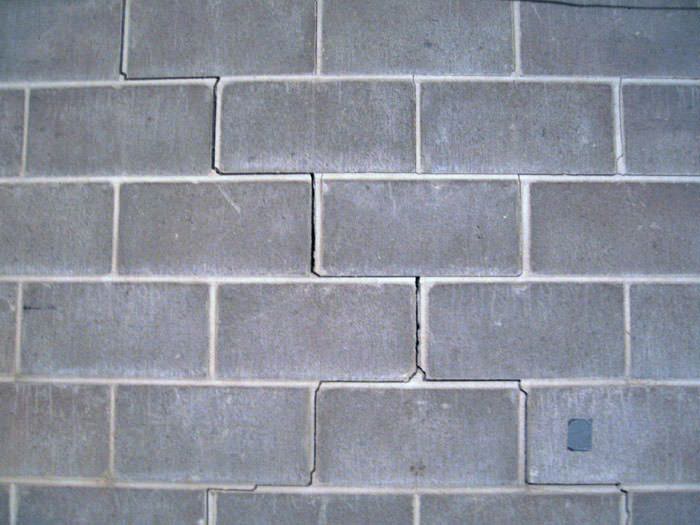- Thermalite Blocks Price
- Repairing Cracks In Thermalite Blocks Sizes Concrete
- Repairing Cracks In Thermalite Blocks Sizes Chart
A #crackedengineblock in a vehicle is not uncommon and certainly does not mean the end of the engine's lifespan. There are various methods of repairing crack. Cracks in Brick Walls &: Foundations - How to recognize, diagnose, & repair or prevent brick wall or foundation cracks due to thermal expansion Factors that determine the extent of thermal expansion damage to a brick wall or structure Absence of control joints or expansion joints in long brick walls leads to extensive cracking damage Photographs of foundation damage patterns and types of.
I guess if it were 2 leaves of brick I would cut out the damaged brickwork and replace but it seems to be more difficult with a solid wall and supporting the existing wall plate.Thermalite Blocks Price
What about stitching the damaged area? Would this be worth it or just go with the expanded metal.Repairing Cracks In Thermalite Blocks Sizes Concrete
Thanks in advance.Matt
Imagine waking up at home, ready for a new day. You head into the bathroom to start getting ready – and there’s a crack above your doorway.
Do you panic? Not necessarily. New and old homes alike can fall victim to wall cracks. Concrete block walls, in particular, can form cracks for a number of reasons. Before you reach for the phone, take your time and inspect the crack you’ve spotted. Some cracks are just annoyances, while others are symptoms of a larger problem – and with a little bit of know-how, you can tell the difference.
Finding Cracks Indoors Versus Finding Cracks Outdoors
The cracks in your walls form for a reason. That said, interior wall cracks often have different causes than exterior wall cracks. Interior cracks in concrete block walls can form for a number of reasons, including:
- Long-term home vacancies
- Faulty piping
- Leaks
- Structural problems
Repairing Cracks In Thermalite Blocks Sizes Chart

The walls on the outside of your home can crack for many of the same reasons. However, if you notice your exterior walls cracking, you may be dealing with:
- Excess home weight
- Settling
- Excess moisture
- Rapidly changing weather
- Inadequate drywall installation
The good news is that not all wall cracks are worth panicking over. If you notice that your cracked wall is leaning or letting in water, then you’re going to want to reach out to a Denver, CO, contractor. If the crack is simply an aesthetic nuisance, you can cover it yourself without worrying about the structure of your home.
Types of Concrete Cracks
Concrete block walls can fall victim to a number of different types of cracks. These types include:
- Vertical – Vertical cracks in your concrete block tend to appear as your concrete cures. The process will bring the particles closer together and create cracks that are often too small to cause any problems. However, if your exterior waterproofing isn’t enough to cover these cracks, you could soon find yourself dealing with a leak. To prevent vertical cracks from forming, be sure to use a liberal amount of concrete during the pouring process to better account for shrinkage during the curing stage.
- Horizontal – If the supports in your walls aren’t strong enough to hold up to the weight of concrete, you may notice your walls starting to bow. In these cases, you’ll likely also see horizontal cracks start to develop. These cracks are a sign of stress, and if they continue to grow, you’re going to want to seek out the help of a contractor to determine what support solutions are available to you.
- Diagonal – Diagonal cracks can form for the same reasons vertical cracks do. If you notice a diagonal crack in addition to wall bowing, you likely have split supports in your walls. If a diagonal crack appears near a door or window, you can blame it on concrete shrinkage, as with vertical cracks. However, if you have a diagonal crack that’s wide toward the top and slim toward the bottom, then your foundation may be settling. These cracks can let in water, but they’re not a sign of faulty supports. Instead, your foundation may be expanding and retracting in response to the weather. The crack will be a result of that rapid change.
- Stair-Step – Concrete block walls often crack along their block lines. If you notice a stair-step crack, think of it in the same terms you would a diagonal crack.
Concrete Block Cracks: What to Do
In most cases, you won’t have to worry about the minor cracks that appear in your concrete block wall. If you notice a crack accompanied by infestation, leaks or mold, however, you’re going to want to have your wall assessed for structural deficits. Know that it's always best to take preventative measures.
Waterproofing the exterior of your home can help protect your walls for longer. If you notice vertical or diagonal cracks forming, have a contractor inspect your foundation, as you may have a foundational leak on your hands in addition to any leaks the wall crack has caused. The waterproofing process can also help protect any green wood supports from coming in contact with water and weakening further.
That said, don’t rely on the waterproofing process as a quick fix. If you think your walls are bowing over a crack, reach out to a professional as soon as possible. Local contractors in Denver, CO, will be able to let you know what’s going on with your wall and what potential solutions will help you retain the value of your home.